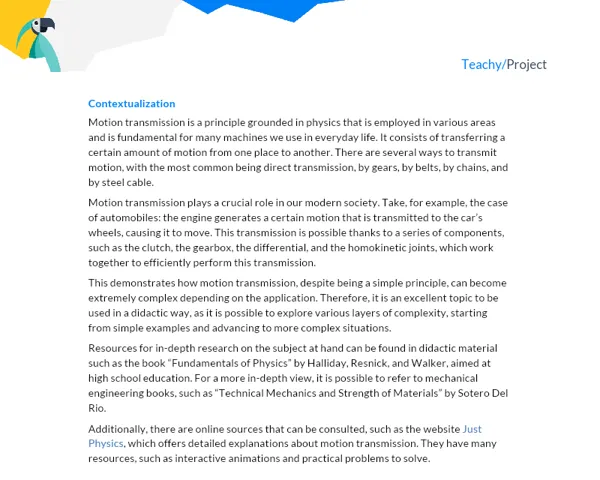Contextualization
Theoretical Introduction
The magnetic field is a region around a magnetic material or a current-carrying wire where magnetic forces are detected. It is produced by moving charges, which can be electric currents or charged particles in motion. Magnetic fields have both a direction and a magnitude (or strength), making them vectors.
In the context of electromagnetism, the magnetic field is one of the main forms of interaction between charged particles. The theory that unites electrical and magnetic phenomena is known as Electromagnetic Theory, which is one of the four fundamental forces of nature.
To fully understand the concept of the magnetic field, it is also important to comprehend the concept of the electric field and the relationship between the two, in a phenomenon called electromagnetic induction. It is a challenging topic but crucial for Physics.
Contextualization
The study and understanding of the magnetic field have practical applications in many aspects of everyday life and in various industries. For example, magnetic fields are fundamental for the operation of generators and electric motors, devices that allow us to convert electrical energy into mechanical energy and vice versa.
Furthermore, magnetic resonance technology, which is widely used in the medical industry for disease diagnosis, is based on the principle of the magnetic field. And who has never had fun playing with magnets, attracting or repelling ferromagnetic objects?
Understanding the magnetic field is crucial for technological innovation and for a better understanding of the world around us. This project will help you explore and understand these concepts in a practical and engaging way.
Practical Activity
Activity Title: Construction of a Simple Electric Motor
Project Objective
The objective of this project is to engage students in a practical activity that demonstrates theoretical electromagnetism in action, through the creation of a simple electric motor on a small scale. The project also aims to instill collaboration skills, effective communication, time management, and creative thinking.
Detailed Project Description
Students will be divided into groups of 3 to 5 people. Each group will be tasked with building a simple electric motor using basic household materials. The motor should be able to move on its own when powered by an energy source (a battery, for example).
This project is a long-term project, which should take more than 12 hours per student to complete, going through multiple stages: research, planning, construction, documentation, and presentation.
Students will have the opportunity to apply concepts of electromagnetism, magnetic induction, magnetic force, and construction of electrical circuits, as well as explore how these concepts fit into a functional electric motor.
Required Materials
- Enamelled copper wire
- Battery (AA)
- Neodymium magnets
- Paper clips or equivalent support
- Fine sandpaper
- Other materials according to the needs of your project
Step-by-Step Guide for Activity Execution
-
Research: Start the project by researching electric motors and how they operate. Understand the theory of electromagnetism deeply.
-
Planning: Based on the research, sketch and plan your electric motor. Decide how you will experiment and measure the results.
-
Construction: Follow the plan as a guide to build the motor. Carefully document the process, noting any difficulties or problems that arise and how they are resolved.
-
Testing and Evaluation: Connect the battery to the motor and see if it works. If not, rethink your approach, research more, and repeat the construction and testing steps.
-
Documentation: Create a detailed report of the activity carried out. This should include the Introduction, Development (with theory, process, and results), and Conclusions.
-
Presentation: Prepare a presentation about the project for the class, where you can show the motor in operation and share the project results, the difficulties encountered, and how they were overcome.
To make the project even more interdisciplinary, it is encouraged that groups integrate artistic aspects into the construction of the motor and/or the project presentation, bringing Art into the project and demonstrating the connection between this discipline and Physics.
This activity allows the practice of essential skills such as collaboration, communication, time management, critical thinking, as well as technical skills, such as understanding magnetic fields and the interaction between electricity and magnetism.
Project Deliverables
At the end of the project, each group must deliver:
-
A Functioning Electric Motor: Demonstrate the motor in operation during the project presentation.
-
A Written Report: The report should follow the suggested structure (Introduction, Development, Conclusions, and Bibliography) and describe in detail all stages of the project, the difficulties encountered, how they were overcome, and the results obtained.
-
An Oral Presentation: During the presentation, explain the project, show the motor in operation, and share the group's conclusions. Use this moment to demonstrate your communication and collaboration skills.
Remember: The goal is not only to build the electric motor but also to learn about magnetic fields, connect theory and practice, and develop socio-emotional skills necessary for effective group work. Good luck and have fun exploring the wonderful world of electromagnetism!


